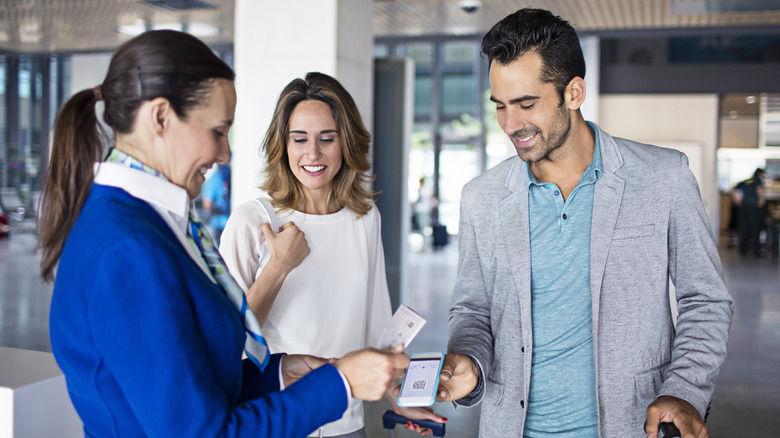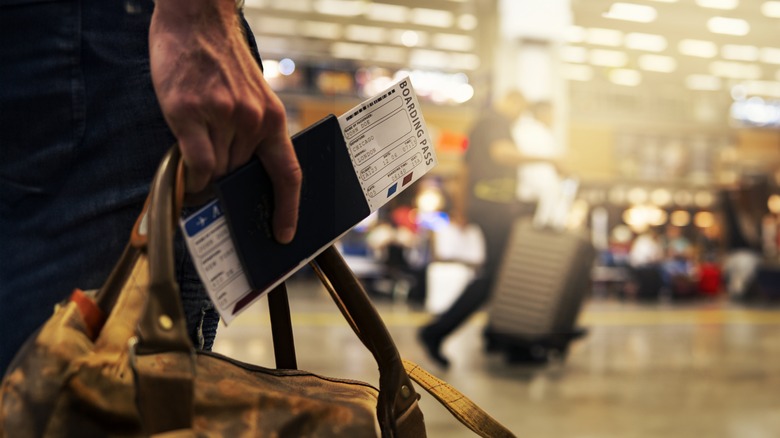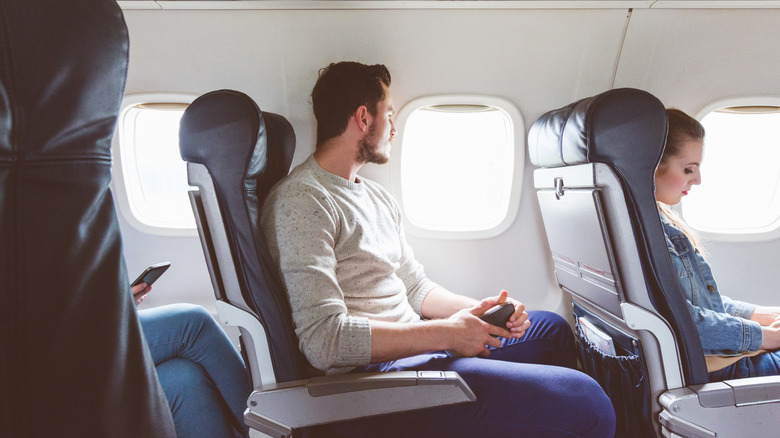Your Flight Number Actually Means More Than You Think
If you travel enough, there's one phrase that probably elicits joy more than any other: the announcement that your plane is finally boarding. While the gate attendant calls out your flight number and you breathe a sigh of relief, you might think those letters and numbers are totally random. But in fact, those codes hold special meaning, a blend of tradition and technology. Among other tidbits, flight numbers inform airport personnel which carrier you're taking, how important the flight is to the airline, and what direction you're heading.
Flight numbers are generated using a combination of computer algorithms and human preference, a detailed selection process that's careful to avoid duplicates, retired numbers, or codes that could spell confusion on the runway, like flying on a 747 on flight 747. While each airline adds some nuance to the mix, there are some universal patterns of note. Once you get the hang of it, it's like cracking a secret code to add to your arsenal of aviation-related trivia.
What the letters and numbers mean
First up, there are usually two letters up front. The International Air Transport Association (IATA) assigns two-letter codes for every airline. Some are easy to figure out, like DL for Delta, UA for United Airlines, or AA for American Airlines. However, a few curve balls are thrown in for good measure, like WN for Southwest Airlines or NK for Spirit Airlines. You might even come across exceptions to the two-letter rule, like F9 for Frontier Airlines or B6 for JetBlue.
After the letters, flights are assigned a number between 1 and 9999. No flight is allowed to contain more than four numerals. In general, the lower the number, the more prestigious or historic the flight is. It could also signal a particularly lucrative route for the airline. For example, Delta Airlines flight DL1 goes from New York to London every night at around 7:51 p.m. The return flight — DL2 — goes from London to New York the following morning. Most of the time, odd numbers are reserved for flights that go south or west. Even numbers go north or east. A flight number with a one-digit difference (like DL1 and DL2) refers to outbound and return flights.
Superstitious numbers in the aviation industry
Of course, not all flight numbers are created equal. There are certain sequences you're unlikely to see on a flight board, like flight 13 or 1313. You also won't see flight 666 very often unless you happened to be on a Finnair flight on Friday the 13th a few years ago. Thankfully, AY666 flew from Copenhagen to Helsinki without incident. Naturally, the airport code for Helsinki is HEL — see what they did there?
While that flight was obviously a joke, tragic incidents in the industry do happen from time to time. And when they do, airlines are quick to retire flight numbers out of respect. After the terrorist attacks on September 11, 2011, involving an American Airlines flight (the first of two planes to crash into the World Trade Center), the regular route from Boston to Los Angeles was changed from flight AA11 to flight AA2455.
On a more positive note, not all superstitions in aviation skew negative. Some combinations are used for a lighthearted spin. Three airlines use flight number 777 for direct flights to Las Vegas: JetBlue, Spirit Airlines, and Frontier. On flights to China, United Airlines incorporates the number 8, which is viewed as a lucky number. If you book the daily nonstop flight from San Francisco to Beijing, you'll be taking in the view from flight UA888. No matter which flight you take, now you'll have an interesting icebreaker to discuss with strangers seated in your row.


